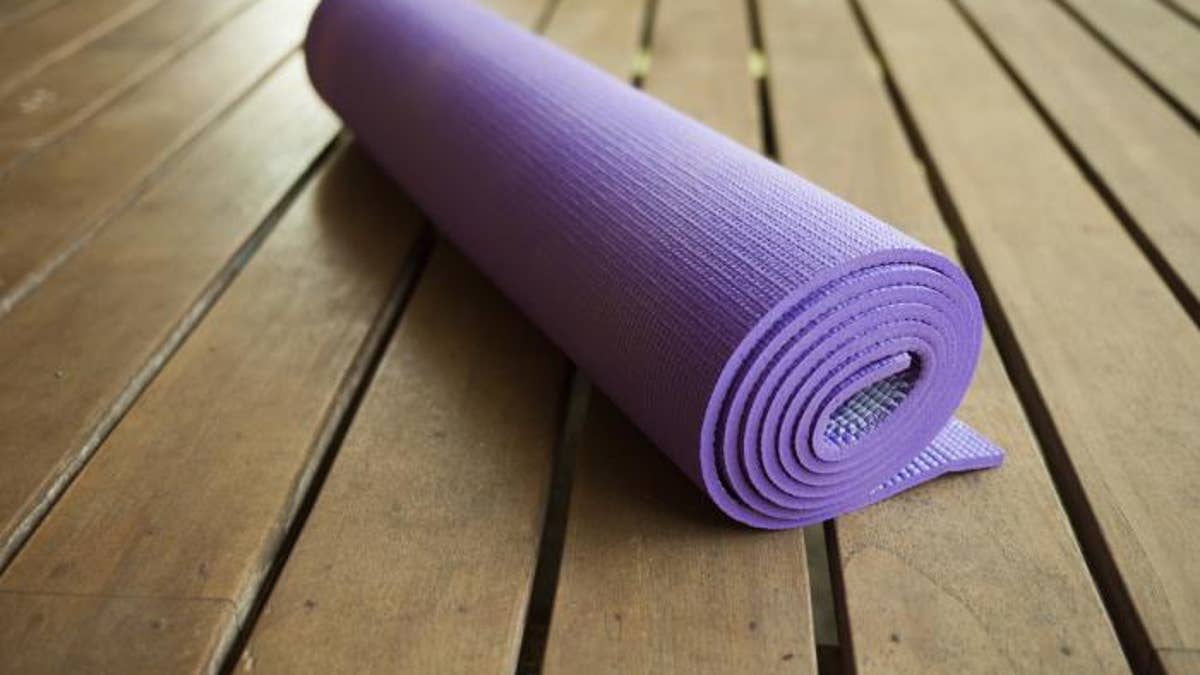
Yoga. It's great for strengthening the body, soothing the soul and balancing the mind. It's just too bad it's practiced atop one of the filthiest surfaces imaginable.
"Yoga mats are a hotbed of contamination, literally and figuratively," states Dr. Robert Lahita, the chairman of medicine and vice president of the Newark Beth Israel Medical Center. "It's a big issue — this is even bigger than cell phones or " he adds.
But what makes a yoga mat so much dirtier than a phone, or an airline seat? According to the experts, it's all because of the bacteria that gets transferred through direct skin contact.
"Skin is loaded with organisms," continues Lahita. "A lot of the organisms come off when you sweat, [and they're] very comfortable living in sweat, especially the fungi." What's more, yoga practitioners often expose more of their direct skin to the mat — and especially the waxier, oilier areas of skin that tend to contain the most organisms, like the back, belly, chest, feet, or forehead.
"[People can transfer] herpes infections, and you can get plantar warts from the herpes. You can get staff infections, MRSA being the worst, or impetigo, which is a strep infection. And there's coryne bacteria, that causes acne. Then there’s all sorts of toenail funguses that can be left on the mat," Lahita says.
"You always have the possibility for cold and flu viruses too — particularly this time of year," adds Dr. Charles Gerba, a professor or microbiology and environmental sciences at the University of Arizona. Viruses, however, will not live as long in the crevices of a yoga mat as an infectious bacteria or fungi, the latter of which could live for days.
Up until now, though, Lahita and Gerba have been discussing shared yoga mats, such as those found at yoga studios and gyms across the country. Are personal yoga mats any different?
"It’s really only your germs," explains Dr. Gerba. "So generally, you wouldn't have anything to worry about."
But even if it is a personal yoga mat, Lahita urges yoga practitioners to be wary of transmitting infectious microorganisms to themselves. "If you had an infection, then cured the infection and proceeded to get back on your yoga mat … you could probably get that same staph back into your skin," he warns.
And all bets are off when someone totes their personal yoga mat to a studio and plops it on their floor, where it can potentially pick up germs from other people's feet or sweat.
"It's very dangerous to believe you’re not going to contract anything else from the other people," says Lahita.
So while yoga may be starting to seem like a scarier and scarier prospect, the solution to the problem is simple: Whether using a shared mat or a personal one, disinfect it before each use.
"I think it’s like any kind of gym device where there's multiple users and sharing," reasons Gerba. "[But] as long as you wipe it down with a disinfecting wipe, you're okay."
Remember, simply using soap or water isn't good enough. "It will not kill the bacteria or the fungi," Lahita says. "You need to have liquid alcohol disinfectants that also contain a detergent, or else you'd just be spreading [bacteria and fungus] around." (For the best results, he recommends Lysol spray, Handi Wipes, or any disinfectant that uses an alcohol- or chlorine-based formula.)
And above all, get your own mat. By skipping the community yoga mats offered at the studio, the chances of picking up a skin infection from a fellow practitioner are dramatically reduced.
"It’s like sharing your bed sheets with somebody," concludes Gerba. "If you're going to [share], it better be with a relative or a great friend."






